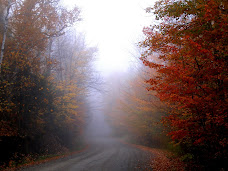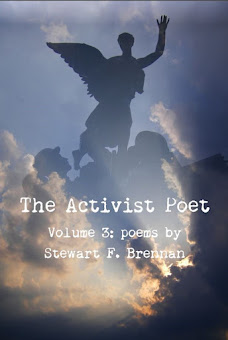

By: Jon Elmer
Source: Al Jazeera
http://english.aljazeera.net/focus/2010/06/20106238405246236.html
As leaders of the richest nations gather in Toronto for the annual G8 and G20 summits, Canada has mounted an unprecedented security operation that stands to go down as the largest in the country's history.
The local and federal governments have resorted to significant measures: barricading the downtown core behind a massive galvanized perimeter fence, erecting checkpoints with x-rays, uprooting trees that police say could be used by demonstrators, and converting a sound stage into a massive temporary detention facility in preparation for mass arrests of protesters.
But with Canadian soldiers, snipers, commandos and police tactical units representing the sharp end of a security budget that is poised to top $1bn, the most significant threat to business as usual for the summit may turn out to be far-flung rural blockades enacted by Canada's long suffering native communities.
"It's a very dangerous situation," said Douglas Bland, a retired Canadian forces lieutenant-colonel who is now the chair of defence management studies at Queen's University.
In recent years in particular, Canada's indigenous communities have shown the will and potential to grind the country's economic lifelines to a halt through strategically placed blockades on the major highways and rail lines that run through native reserves well outside of Canada's urban landscape.
"The Canadian economy is very vulnerable," said Bland.
"More than 25 per cent of our GDP comes from exports of raw materials, but especially oil, natural gas and electricity to the United States."
"It's undefended and undefendable infrastructure, the pipelines and power lines and so on, and it runs through great spaces of open countryside and they run through aboriginal territories.
"It would take a very small number of people very little time to bring [it] down," said Bland, who is the author of a "barely fictionalised" account of native insurgency in Canada, entitled Uprising.
Blockades
In 2007, the Mohawk community at Tyendinaga, 200 kilometres east of Toronto, blocked the trans-continental rail line and Canada's largest highway in protest at the government's failure to address land rights and basic issues of survival within First Nations - including safe drinking water, which the community lacked.
That episode was a hint of the leverage indigenous peoples in Canada possess, as hundreds of millions of dollars in cargo was stalled by simple barricades placed across a rural stretch of the Canadian National railway's mainline between Toronto and Montreal.
"The message resounded," said Shawn Brant, a high profile Mohawk activist involved in the 2007 blockades.
"We are not going to live in abject poverty, to have our children die, to have our women abducted, raped and murdered without any investigations. We are not going to live with the basic indignities that occur to us daily. We would bring them to an end."
In 2007, Brant characterised the blocking of the 401 highway and CN main rail line as a "good test run".
"We showed that we would meet the severity of what was happening to us with a reaction and a plan, a strategy that would be equally as severe," Brant said.
Last week, Aboriginal Peoples Television Network broadcast footage of Canadian intelligence agents threatening a native activist ahead of the G8 summit.
"I will tell you straight up," said an agent of the Canadian security and intelligence service to an indigenous activist, "there [are] other forces that are from other countries that will not put up with a blockade in front of their president".
The twin summits, held in Toronto and Huntsville, a rural community that lies 225 kilometres north of Toronto, are separated by a major highway that runs through large swathes of indigenous territory adjacent to the major travel arteries.
A determined blockade could wreak havoc on the summit and cast light on Canada's darkest shame.
Blockades, said Harrison Friesen, a spokesperson for native rights movement Red Power United, would be intended to show the world that "everything is not okay in Canada for native people".
Insurgency?
Bland argues that the situation within First Nations in Canada has all the attributes of an insurgency.
"These root causes, these abysmal conditions for some of the aboriginal people are serious."
There are more than 800 outstanding native land claims held against the Canadian government. And in many First Nations communities there is deep crisis, with poverty, unemployment and overcrowding the norm.
According to figures from the Assembly of First Nations, more than 118 First Nations lack safe drinking water and some 5,500 houses do not have sewage systems.
Almost one half of homes on native reserves are in need of "major repairs", compared with 7 per cent of non-native homes.
Natives suffer a violent crime rate that is more than 300 times higher than Canada's non-native population, while natives represent 18.5 per cent of the male prison population and one-quarter of the female population, although natives only constitute 4 per cent of the total population.
In some provinces, the incarceration rates are starker.
In Manitoba, 71 per cent of prisoners are native, although natives represent only 15 per cent of the province's population; in Saskatchewan, the number is even higher, with natives accounting for 80 per cent of prisoners but only 11 per cent of the population.
The Royal Canadian Mounted Police recently characterised the prison system as "community colleges for [native] gangs".
These "gangs" are increasingly politicised and some of Canada's leading military planners are warning that a full-blown uprising is gathering.
The groups operate in what the military calls "ungoverned spaces" that are increasingly difficult to police.
They are also sophisticated, operating under the "Robin Hood" principle of robbing from the rich and giving to the poor, say military planners.
When combined with their tangible grievances, "you have the root causes which can be the fuel for an insurgency. It's entirely feasible," said Bland.
Counterinsurgency posture
In 2007, a draft edition of Canada's army counterinsurgency field manual highlighted the Mohawk Warrior Society as a case study insurgency.
But after the excerpt was made public by media reports, Gordon O'Connor, the then defence minister, issued a statement saying that the reference would be removed from the final draft, which was released in 2008.
"The withdrawal of the topic out of the counterinsurgency manual was typical of the reaction by government for fear of upsetting the precarious status quo of relations in the country right now," said Bland.
"It is an example of a trend in Canadian political leadership.
"There is a great reluctance to name, point to, suggest that we have an internal security problem in Canada based in either the aboriginal communities or in what the Royal Canadian Mounted Police call the aboriginal based criminal organisations.
"One of the difficulties of discussing the issue and more seriously acting against it," said Bland, "is that by acting against an individual native protest or activity, you might incite the entire community across the country".
Political leaders "fear baiting what they don't want to happen, so you see them backing off all the time".
Indeed, the threat of blockades by more than 40 First Nations communities this week forced the provincial government in Ontario to back down on a plan to enforce a new harmonised sales tax on native communities, in contravention of longstanding treaty agreements.
The message has been received, said Brant. "We've shown that, unified, we are capable of not just disruption, not just protest, but a willingness to use the economy as a tool in the arsenal to fight."
"The government ran its infrastructure through our land because no one else wanted it to run through theirs," said Brant.
"Now it serves as an incredibly power[ful] tool of influence that allows us now as a society to engage government in a dialogue, a relationship based on us having power."
In 2007, Chief Terrance Nelson of Manitoba's Roseau River Anishinabe First Nation made headlines when he told a television reporter that "there are only two ways of dealing with the white man ... either you pick up the gun or you stand between him and his money".
There is no shortage of examples of either tactic of native resistance in recent Canadian history.
In 1990, an historic armed standoff between Mohawks and the Canadian army near Oka, Quebec lasted more than two months when the provincial government tried to convert a native burial ground into a golf course.
Five years later, in 1995, the Canadian government used helicopters, armoured personnel carriers, improvised explosives and more than 77,000 rounds of ammunition during a three-month standoff over land title at Gustafsen Lake, in British Columbia.
Speaking at a senate hearing in May, Canada's top general in Afghanistan suggested that the country's counterinsurgency war in Kandahar and its "whole of government" strategy has helped prepare Canadian forces and its civilian partners for such eventualities.
"If Canada were having an issue of insurgency," said Brigadier-General Jonathan Vance, "there would be a multi-discipline, multi-department operation with the government managing and directing carefully what its military and police forces would do".
"We experienced a little of that ... with the events at Oka." But now, said Vance, "the government is engaged".
Bland agreed, saying that the counterinsurgency experience fighting the Taliban in Kandahar is "completely relevant to what might happen here, and to what happened at Oka".
That posture, Brant said, is a "grave mistake".
"Since Oka, we've evolved from being reactionary to instances that occur to having a strategy. We've become communities that have embraced the injustices of the past and combined them with the indignities of the present. We have been able to inspire all elements in our communities," said Brant.
"We've created a unity that they don't have the military or policing capabilities to confront."

















a.jpg)

a.jpg)








No comments:
Post a Comment
Thanks for commenting on this post. Please consider sharing it on Facebook or Twitter for a wider discussion.